I have two Matplotlib plot_surfaces that intersect. For example, two spheres that are close enough to intersect.
When I use the mouse to move the camera angle, I expect proper occlusion (I.e. not to see the parts of the sphere that are hidden by the occlusion).
Instead I am stuck seeing one object always fully rendered on top of the other.
I need to render png files for an important presentation. But with the current occlusion being so wrong... I can't use any screenshots.
How do you get proper occlusion of surfaces?
Does non interactive backends and renderers do occlusion correctly? (If yes, then that would be a way-forward. Albeit a non-ideal and inelegant way-forward... but at least I can save pictures of the figure that would be usable in my presentation by programmatically setting the camera's elevation and azimuth and camer center.)
Minimal, Complete, and Verifiable example code:
#!/usr/bin/python2
# from: http://matplotlib.org/mpl_examples/mplot3d/surface3d_demo2.py
from mpl_toolkits.mplot3d import Axes3D
import matplotlib.pyplot as plt
import numpy as np
fig = plt.figure()
ax = fig.add_subplot(111, projection='3d')
u = np.linspace(0, 2 * np.pi, 100)
v = np.linspace(0, np.pi, 100)
x = 1 * np.outer(np.cos(u), np.sin(v))
y = 1 * np.outer(np.sin(u), np.sin(v))
z = 1 * np.outer(np.ones(np.size(u)), np.cos(v))
ax.plot_surface(x, y, z, rstride=4, cstride=4, color='b')
# modification from original code
ax.plot_surface(x+1.5, y, z, rstride=4, cstride=4, color='b')
plt.show()
screenshots:
for some reason when you rotate the camera's azimuth this causes one object to be painted on top of the other. these two screen shots demonstrate azimuth -88 degrees and then -92 degrees. so maybe the issue is the -90 degrees. OR maybe whatever plot_surface object that has a center that is closer to the camera gets rendered on top of the other object.

